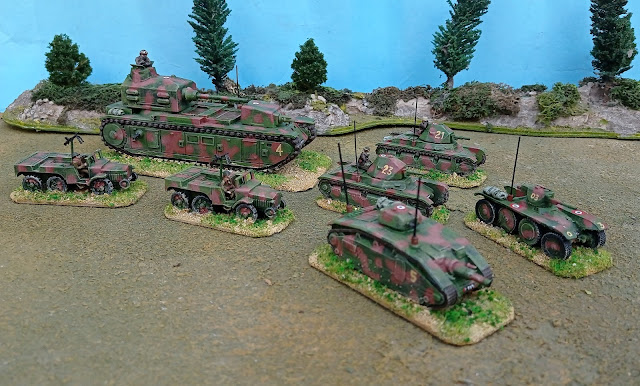The Soviet standard uniform (L) was painted with Vallejo Russin uniform while the Telogreika was painted with Vallejo Grey Brown. I painted them as I paint my 20mm figures: black spray as primer; followed by the main colors; then, main colors with 50% white all mixed. The helmets get a bit of metal color mixed with dark green as somehow they become more lively.
This a wargaming place were you can see a growing collection of miniatures and terrain of many historical periods in 20mm (but also a few 10mm,15mm and 28mm) started when I was 10 yo. At the moment it has several tens of thousands of miniatures from foot figures to Destroyers. Occasionally there are some war movie critics and some travel to military sites. My family considers it the best wargaming site in the World even if it is the only one they know. More on @joaopeixoto5249 YouTube Channel.
Friday, 17 November 2023
28mm Warlord WW2 Soviet infantry
The Soviet standard uniform (L) was painted with Vallejo Russin uniform while the Telogreika was painted with Vallejo Grey Brown. I painted them as I paint my 20mm figures: black spray as primer; followed by the main colors; then, main colors with 50% white all mixed. The helmets get a bit of metal color mixed with dark green as somehow they become more lively.
Saturday, 11 November 2023
Airfix nostalgia batch from the 50´s built and painted
Friday, 10 November 2023
Hastings 1066 - The Saxon Lithsmen in 20mm for Impetus rules
The Saxon line at Hastings had Nordic mercenary -Lithsman- also. I imagine them with Viking looks which favours the beginning of a Viking army for the previous battle, Stamford Bridge and many others.
I gave them a Nordic look with plenty of axes and blond hair. All figures with the Gjermundbu helmet were concentrated in these stands as this helmet is typically Nordic and a trademark of Viking equipment. Some of the figures got a spear instead of a sword as Revell (and before Elastolin, which are copied in the Revell box) exaggerated the number of swords.
Next: My latest batch of Airfix models from the 50's or a video on the Iraqi 3rd Saladin Armored Division in 1991.
Monday, 6 November 2023
The French tank projects for 1941 in 20mm for Rapid Fire! rules

Sunday, 5 November 2023
Soviet ZTZ-5 Tractors in German service in 20mm size for Rapid Fire! rules
Next: 'What If ' French for 1941.
Friday, 3 November 2023
French vehicles in German service in 20mm size for Rapid Fire! rules
The Laffly S45 tanker was used by the French aviation as thus its not the most wargame friendly model as a scenario for it is not easy. So this one was dispatched no North Africa were one day it may be used in a Barce style raid. No proof of this, though, only a guess.
I can't really understand were this photo of captured S45 tankers was taken but it clearly shows that the Germans found them valuable.
Next: Soviet tractors in German usage.































%20towing%20a%20gun.jpg)










